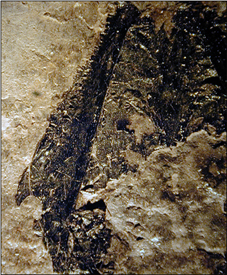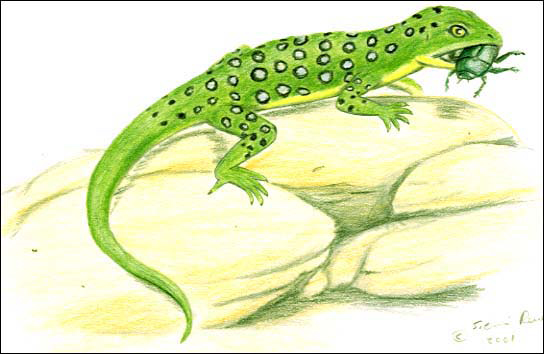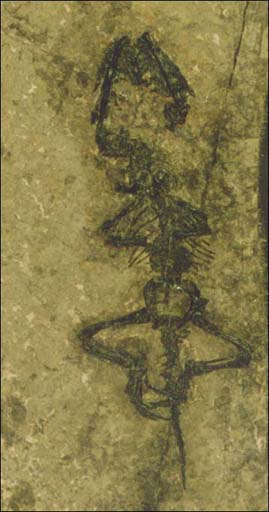|
The specimen, that represents a juvenile
individual, is exposed on its ventral side, it is nearly complete and
articulated, missing only the middle and posterior portions of the skull.
The analysis of the skeleton identifies it as an advanced diapsid. All
detectable synapomorphies suggest that it belongs to the
Lepidosauromorpha, and no arcosauromorph character is present. Within the
Lepidosauromorpha, many of the synapomorphies of the primitive
sphenodontids are shared by the specimen: the posterior process of the
dentary ends behind the coronoid, a well-developed posterior tubercle is
present on the posterior margin of the ischium; the frontals are fused,
posterior teeth are fully acrodont; there are less than seven premaxillary
teeth. Among the Sphenodontidae the most similarities can be found in two
genera - Diphydontosaurus and Planocephalosaurus. Apparently
these two genera are distinguished by very few characters, mainly skull
features. The evaluation of skull features in this specimen raises
problems, owing to poor preservation and its probable juvenile stage.
Apparently there are four premaxiliary teeth, but this cannot be stated
with confidence; the anterior maxiliary and dentary teeth may bave been
pleurodont, as in Diphydontosaurus. The specimen shows the same
shape of the scapula of Planocephalosaurus but in the dentition a
small ridge can be dedected on the dentary tooth, but no flanges on
maxillary and dentary teeth, typical of this genus can be observed. In the
present state of knowledge, there are no valid reasons for the erection of
a new genus for this specimen, and it is tentatively ascribed to the genus
Dyphidontosaurus, on the basis of the pattern of
dentition.

Artwork by S. Renesto unless otherwise
indicated. Please do not reproduce/repost/republish etc. any text or image without asking
permission to the author
Home
Research
Triassic Reptiles
|


